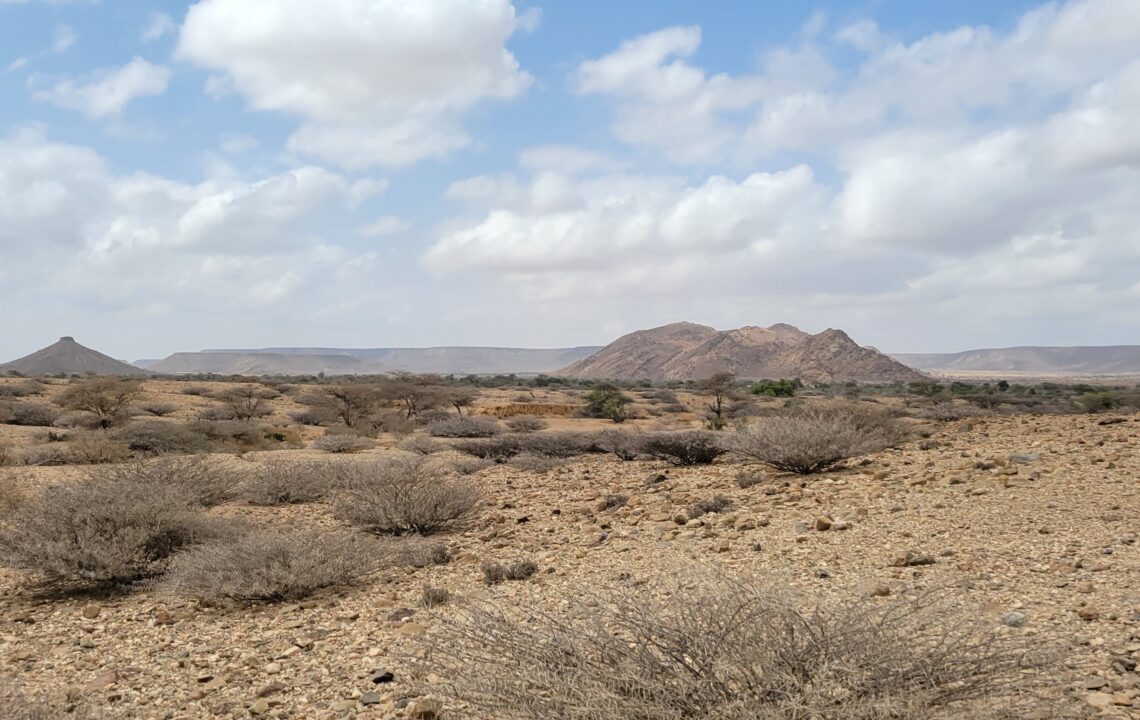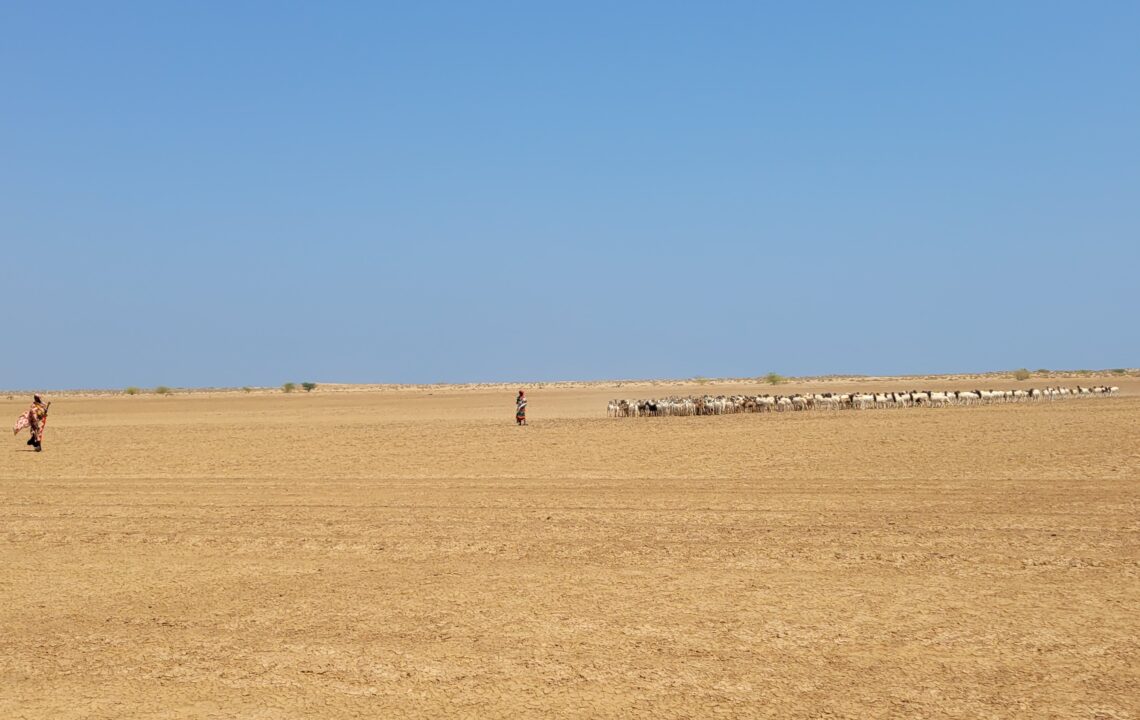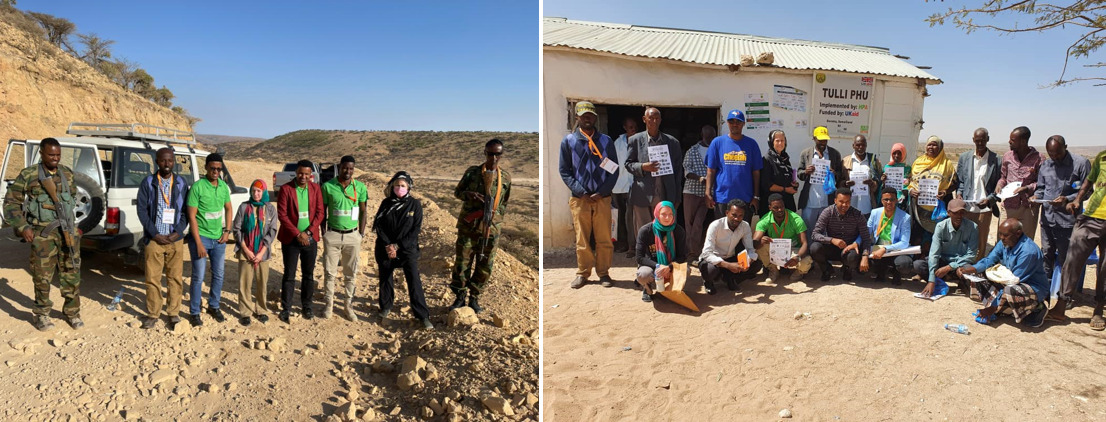Oryx blog – Searching for wild cheetahs in remote regions of the Horn of Africa
-

- by Hannah Mulvany 18 February 2023

This blog article has been replicated from the original which featured on the Oryx blog on 2nd of February 2023. You can find the original article here.
By Emma Reasoner, Dr. Bogdan Cristescu & Dr. Laurie Marker, 2nd February 2023
The Cheetah Conservation Fund (CCF) dedicates most of its efforts to the conservation of cheetahs in the wild, and operates two field centres, one in Namibia in southern Africa and one in Somaliland in the Horn of Africa. At the latter, in partnership with the government of Somaliland, CCF cares for cheetahs confiscated from the illegal wildlife trade, in the city of Hargeisa. In addition, a new Cheetah Conservation and Rescue Centre is being constructed in Geed Deeble near the location of Somaliland’s forthcoming first national park; the Centre will serve as a new operations headquarters and research facility for the CCF team.

Typical landscape of Awdal region, Somaliland showing the aridity and harshness of the environment.
Many of the remaining free-ranging cheetah populations live outside protected areas. On land that is not formally protected, human–cheetah conflict can occur as a result of perceived or real predation of livestock in places where people and cheetahs live in close proximity. Over the past 50 years, such conflict has become one of the main threats to the species’ survival, along with habitat loss, declines in the species’ wild prey base, and the illegal wildlife trade.
Because of their elusive nature, counting cheetahs can be difficult, and there is no baseline information on cheetah presence for many areas of Africa. Dr. Laurie Marker developed CCF’s first community survey research project in the early 1990s, with the goal of building an understanding of the population and distribution of cheetahs in Namibia. This was followed with camera trapping, collaring of cheetahs, community surveys and the use of scat detection dogs to investigate habitat use and home ranges. Surveys focused primarily on cheetah sightings, incidences of conflict, and resource management. Conducting these surveys also helped to create relationships with the livestock farming community across Namibia’s conservancies.

A flock of small livestock and pastoralists heading to a waterpoint in western Somaliland.
The success of the camera trapping and community surveys in Namibia was the basis for conducting similar work in Somaliland, where, although there was known illegal trade in cheetah cubs, little is known about the status and distribution of wild cheetahs. In the Horn of Africa, Somaliland is a transit route for trafficking, with at least some of the trafficked cheetah cubs thought to originate from areas outside Somaliland, such as Ethiopia and Somalia. The last published report on wild cheetah presence in Somaliland was in 2010 and, prior to our study, there had been no follow-up to examine whether the species persists.

“During my master’s studies at CCF’s Field Centre in Namibia, I helped to conduct human–wildlife conflict research. At the end of 2020, I had the opportunity to travel to CCF’s Somaliland field centre and be part of research to investigate the status of the wild cheetah in Somaliland, specifically in the rural Awdal region in the west. Our field team comprised CCF’s founder and Executive Director, Dr. Laurie Marker, myself, and a delegation from Somaliland’s Ministry of Environment and Climate Change, including Abdinasir Hussein Saaed, the Director of Wildlife, and Khadar Yasin Aden, the Regional Director for the Awdal region. Departing from Hargeisa, we carried out surveys and interviewed informants in villages across the Awdal region.”

“Our convoy passed across the rocky plateaus of southern and central Awdal and the sands of coastal northern Awdal, all the way to the Gulf of Aden, a well-known export point for the illegal wildlife trade. Wherever we stopped to meet with communities, we were served Somali tea, sweet with sugar and spices. In many villages, key informants such as village elders and focus groups of livestock farmers reported cheetah sightings and/or losses of livestock to cheetahs.”

“From our projects in both Namibia and Somaliland we have found that people often confuse cheetahs with predators such as leopards or servals. To build a more complete picture of cheetah presence, we combine survey and interview information with data collected from camera traps. In March 2022, Dr. Laurie Marker and Dr. Bogdan Cristescu, Assistant Director for Ecological Research, joined with Somaliland’s Ministry of Environment and Climate Change to continue surveying the Awdal region for the presence of cheetahs. They were able to investigate two sites where cheetahs were reported to have been sighted. At one, where a cheetah had been spotted on the morning of the visit, they found a set of cheetah tracks. In the other, they discovered two potential cheetah scrapes. In 2020 and 2022, CCF also obtained photographic records of three cheetahs killed in the Awdal region. We were able to collect samples from one of these carcasses, and genetic testing for subspecies identification was conducted at CCF’s genetics lab in Namibia.”

“We believe our findings, confirming the continuing occurrence of cheetahs in the wild in Somaliland, merit an update of the IUCN map of the cheetah’s distribution, to include western Somaliland as part of its range. We are planning a systematic survey of cheetahs in the Awdal region and to expand our surveys to other areas of the Horn of Africa.”
The article ‘Cheetahs persist in the wild in Somaliland’s remote Awdal region’ and the full list of authors are available in Oryx—The International Journal of Conservation.

Related Reading
-
30 October 2024
Meet the Bandit Group: a crew of cheetahs aged 9 to 11 months



